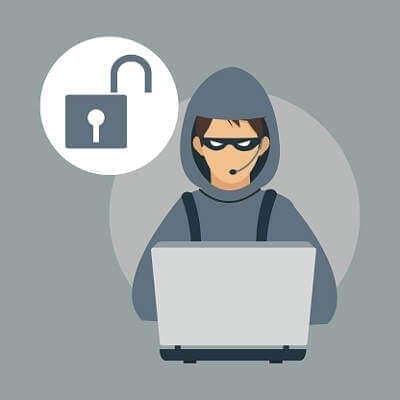
Ransomware has gained serious notoriety over the last few years. Bugs like CryptoWall and Locky have claimed countless victims through a variety of tactics, particularly spoof emails. But recently, ransomware attacks have utilized a new point of entry to victims’ computers: Microsoft’s Remote Desktop Protocol.
What are Ransomware Attacks?
If you’re unfamiliar with ransomware, we’ll keep this simple. It’s basically a form of malware that renders your computer’s data inaccessible until you pay money to those who hijacked it.
Predictably, the hackers who’ve targeted your computer will rarely return your files after you’ve paid the ransom. They just steal your money. That’s why it’s important to prevent ransomware from attacking your computer in the first place.
For an in-depth discussion of ransomware and how it works, read this blog we previously wrote.
How Ransomware Preys on Remote Desktop Protocol
The main way hackers have been targeting Remote Desktop Protocol (RDP) is through brute force attacks. This means they use a scripted program to automatically enter a huge number of common login credentials, and eventually, they hack into the RDP they’re targeting. Once they’ve gained access, they drop malicious files onto the computer they’ve infiltrated and it becomes infected.

4 Ways to Protect RDP from Ransomware
1. Update your Password
The vast majority of successful cyberattacks leverage weak passwords. Your password is your first line of defense. It’s your responsibility to make sure it’s strong.
Brute force hacking scripts can crack common passwords in a fraction of a second. It’s recommended that you make your password a combination of capital and lowercase letters, numbers and special characters in order to throw hackers off the trail.
You can test the security of your password at this webpage from BetterBuys. Enter it, and you can see how quickly it will take a brute force program to guess it. Passwords like “password” take just .23 milliseconds, while more complicated ones like “Ja!@53ij” take over a decade. A-10 year wait is likely to deter most brute force ransomware attacks.
2. Invest in Cybersecurity
Free or cheap antivirus programs just don’t to the trick anymore when it comes to protecting businesses. Your business basically has a target on its back in the eyes of hackers, because they know how much valuable financial information most businesses harbor.
Every business, regardless of its size or industry, should invest in cybersecurity. Often, nobody feels like they need to take cybersecurity measures until they suffer an attack, and by that time, it’s too late.
3. Don’t Open Emails from Unknown Senders
Just like you wouldn’t accept a drink from the hand of a stranger at a bar, you shouldn’t click email attachments from unknown senders. Is it possible they have good intentions? Sure. Is it also possible they’re looking to hurt you? Big time.
Play it safe. If you receive an email from someone you’ve never heard of, DO NOT open any attachments it may have. Spoof emails are among the top tactics at the disposal of hackers, since people are constantly falling victim to them.

4. Listen to your IT Company
If your business has hired an IT company, ask for their advice on cybersecurity and follow it. The security measures they ask you to take may seem unnecessary on the surface, but there’s a method to their madness.
Their job is to prevent cyberattacks from happening. And in the case that an attack does happen, their job is to minimize the damage done. Even if they request that you shut down your RDP system entirely, they’re doing it to protect your business and its assets, not to inconvenience you.
The prevalence of ransomware attacks will only continue to grow. We don’t mean to scare you, but your business could be the next target. Follow this guide, and you’ll likely avoid any serious threat.{{cta(‘21368358-003c-4f37-b530-9631af96b096’)}}





